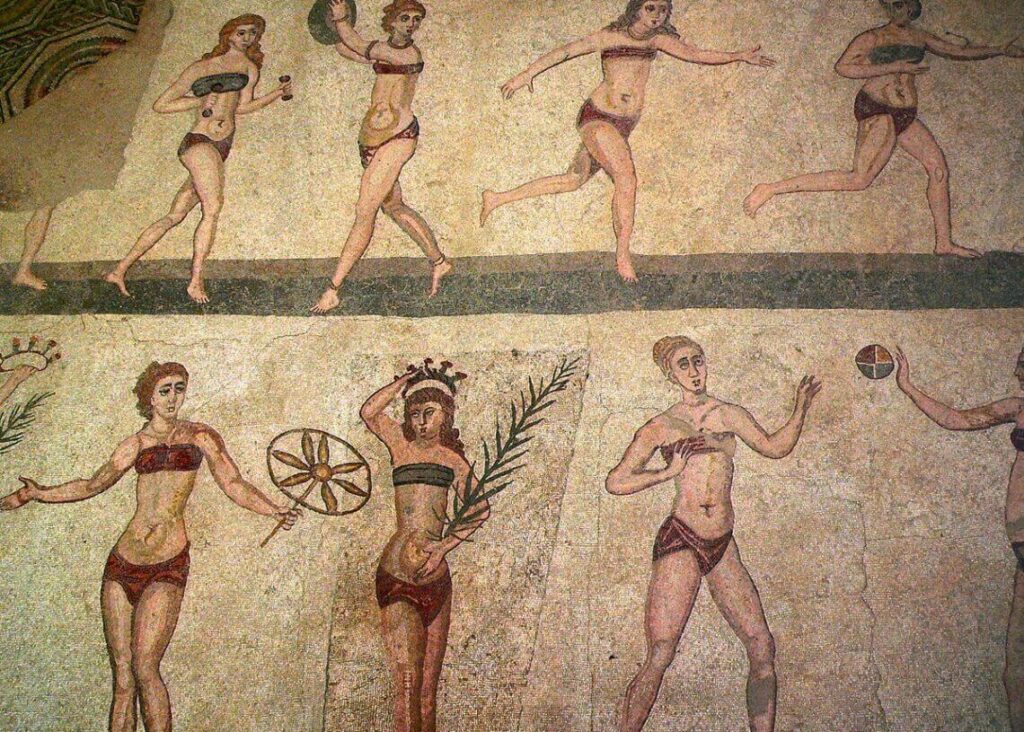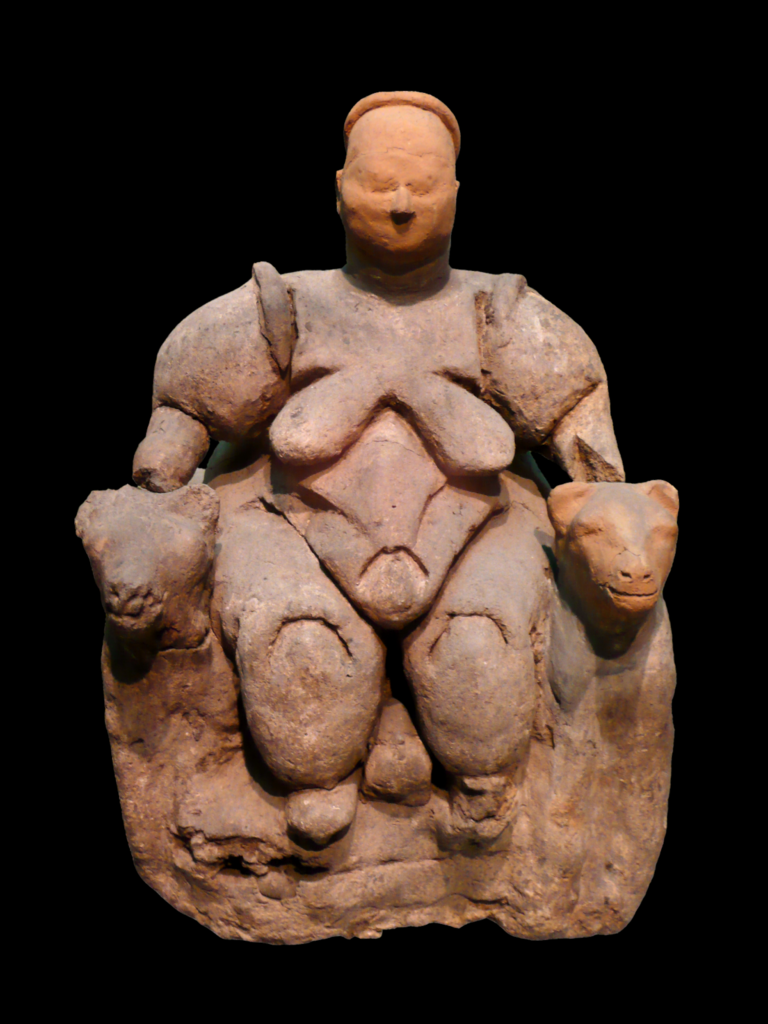The bikini is now a pretty ubiquitous item of clothing, from the beach to the festival. Hell, some girls even wear their bikini about town when the weather is good.
And while you might take this cool and stylish piece of clothing for granted, you might also be wondering where the bikini came from. When was the first bikini invented?
Well wonder no more! We’ve taken a look at the history of the bikini and popped it into this nice easy guide. Aren’t we good to you 😉
Did the Romans invent the bikini?
The first use of a two-piece swimsuit is said to have happened back in ancient Rome, where women wore bandeau tops and loincloth-style bottoms. These swimsuits were made from linen or wool, and they were designed to cover the chest and groin areas while still allowing for movement in the water.
They may not have been very comfortable or practical, but at the time it was probably better than any other alternative.

The bikini in pre-history?
However, recently it was discovered in southern Anatolia by archeologists, that bikinis might have been present as soon as 5600 BC. Çatalhöyük – a mother-goddess – is depicted next to two leopards and the clothing she’s wearing is eerily similar to a bikini. Because there hasn’t been physical evidence, just this depiction, it might be the wrong assumption, but there is a good chance that bikinis have been around way longer than we would’ve thought.

These two are the most likely to be the first recorded pieces of bikini-history, however, in the future we might discover something even more ancient that changes our view on this type of clothing entirely.
The modern bikini
The bikini as we know it today is only loosely related to what people wore in the ancient times. The shape and use is similar, however a lot has changed since then and it’s thanks to a few fashion designers.
French fashion designer Louis Réard is credited with inventing the bikini in 1946, although he wasn’t the only one experimenting with the idea of a two-piece swimsuit. Another designer, Jacques Heim, had created a similar swimsuit that he called the “atom” just a few months before Réard unveiled his design. However, Réard’s bikini was the one that caught the public’s attention, so the original inventor’s name might remain unknown to most of the world, since Réard still continues to get the credit for the garment.
Réard was a mechanical engineer turned fashion designer who owned a swimwear company. He was inspired to create the bikini after seeing women on the beaches of St. Tropez rolling up their swimsuits to get a better tan. He wanted to design a swimsuit that was even more revealing, and so he created the bikini.
The first bikini was made of just 30 square inches of fabric and was so small that no models would wear it. Since the original purpose of this garment was to let people tan on a bigger surface, this seemed okay at first. Réard had to hire a sex worker, more accurately, a stripper to model the bikini for the first time, and even then, it caused quite a stir, which was understandable at the time. The bikini was so scandalous that the Vatican even condemned it, calling it “sinful” and “immoral.” However, the bikini’s popularity only grew from there, as people began realizing how much more comfortable and practical it was.
The Golden era of the bikini
In the 1950s and 1960s, the bikini became more mainstream, and it was worn by celebrities like Brigitte Bardot and Ursula Andress. The bikini became a symbol of sex appeal and freedom, and it was embraced by the counterculture movement of the 1960s. It was during this time that the bikini became associated with the sexual revolution and women’s liberation. The amount of skin it showed was a great sign of confidence, not to mention, it allowed women to show off everything they could.
In the 1970s, the bikini continued to evolve, and new styles were introduced. The high-waisted bikini was popularized during this time, and it became a more modest alternative to the traditional bikini. The bikini also became more colorful and playful, with bright prints and patterns becoming more common and this was also the first time when animal prints became the new biggest hit.
The 1980s and 1990s saw the rise of the string bikini, which featured tiny triangle tops and string bottoms. This style was popularized by models like Elle Macpherson and Cindy Crawford, and it became a staple of beach fashion during this time. These were obviously more revealing, so once again, there was a bit of an uproar at first, but as we can see, it didn’t last too long and the styles remained.

Today’s bikini
This type of swimwear still continues to evolve with new styles and cuts and shapes coming out each and every day. They are now made to fit bigger busts, so that they receive the amount of support they need and there are also bikinis that are specifically made to be tan-through (which means that you remain covered, but your skin still tans through the fabric). The bikini has become a fashion statement, with designers creating unique and innovative designs every year and in today’s world, there are very few women who don’t have a single pair in their wardrobe.
Despite its popularity, the bikini remains controversial in some parts of the world. In some countries, the bikini is seen as too revealing, and it is banned in certain public places. However, the bikini continues to be a symbol of freedom and female empowerment, with women around the world embracing the two-piece swimsuit as a way to express their individuality and style.
Hopefully in the future these areas will warm up to the idea of the bikini as well, as it’s only a piece of clothing, yet it can make a person feel great.




